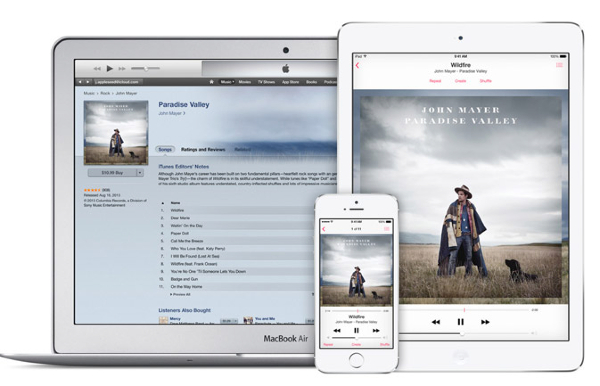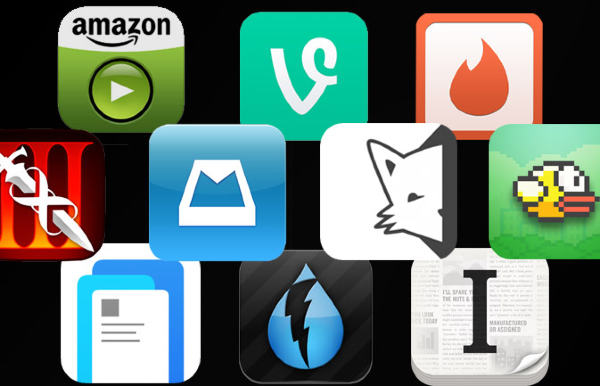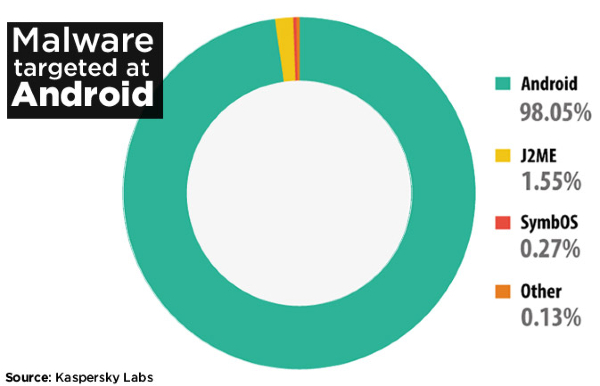5 Reasons the iPhone 5s Beats the Galaxy S5
The Samsung Galaxy S5 won't deliver enough to sway people away from their iPhones. Here are five reasons why the iPhone is the phone to beat.
In the 2014 edition of the smartphone wars, it’s going to come down to the Galaxy S5 and the iPhone 6. But even in April when Samsung’s sequel debuts, it’s not going to deliver enough to sway people away from their iPhones. Sure, the S5 looks like it will be a top seller, even if it copies iPhone 5s’ built-in fingerprint reader. But otherwise this 5.1-inch follow-up doesn’t represent that much of a threat. Here’s why the iPhone 5s is still the device to beat.
1. Better Design

There's a dimpled textured finish on the back and a slightly larger screen, but otherwise you'd be hard-pressed to tell the difference between the Galaxy S4 and the S5. Actually, there's one bad difference: the microUSB port is covered by an annoying flap, which helps Samsung call this handset water-resistant. I'd rather have a phone I can't splash then be forced to eject a flap every time I wanted to charge it. And while the back of the S5 feels nicer, the metal-and-glass iPhone 5s still has a more premium vibe. I'll take aluminum gold over plastic gold every time.
2. More Intuitive Interface

While I applaud Samsung for giving a flat makeover to its TouchWiz overlay for Android, iOS 7 is still by far the easiest software to use on a mobile device. Swiping down from the top of the screen presents an overwhelming number of options on the S5, which is good for power users but not for those who prefer simplicity.
The My Magazine UX, accessible by swiping to the left, provides a Flipboard-like experience but adds yet another layer of complexity. The iPhone 5s doesn't provide nearly as many options, such as in Control Center, but it feels like a more curated experience.
3. iCloud and iTunes

There is something about Apple's ecosystem that keeps pulling folks back in. For me, I love being able to take notes in a meeting on a MacBook Air and then have them automatically show up on my phone. That’s just one of the benefits of iCloud. You don't have to think about it.
Meanwhile, Samsung has tried its hand at selling content (movies, books, TV, etc.), but it doesn’t feel nearly as seamless as the iTunes store. Most Galaxy owners I know never touch Samsung's Hubs, instead relying on Google Play or third parties. This is important, because when Apple is ready to enter the mobile payments game, iPhone owners should be able to use their iTunes accounts. Samsung is working with PayPal for mobile payments on the Galaxy S5.
4. Apps, Apps, Apps

Secret. Infinity Blade 3. Flappy Birds. Vine. Mailbox. Amazon Instant Video. Facebook Paper. Tinder. I could go on. Whether it's a hot new messaging app or a game everyone is talking about, the best apps tend to go to iOS first. And some never make their way to Android. There's some very good reasons for this reality. Developers tend to favor iOS because it's easier to develop for a single, non-fragmented platform. They don't need to account for myriad OS versions, screen sizes and resolutions. Most important for devs, iPhone owners pay more than three times per app than Android users (19 cents versus 6 cents, on average).
Get instant access to breaking news, the hottest reviews, great deals and helpful tips.
5. More Secure

Despite a recent security update for iOS that addressed a critical SSL vulnerability, overall, Apple's more "closed" platform has been much less susceptible to threats. A recent study from Kaspersky Labs found that 98 percent of mobile malware targets Android, which confirms the "popularity of the mobile OS and the vulnerability of its architecture." The good news is that there’s plenty of security suites available for the S5 and other Android phones, but most smartphone owners would rather not deal with these kinds of headaches.
Follow Mark Spoonauer at @mspoonauer. Follow Tom's Guide at @tomsguide, on Facebook and on Google+.
Mark Spoonauer is the global editor in chief of Tom's Guide and has covered technology for over 20 years. In addition to overseeing the direction of Tom's Guide, Mark specializes in covering all things mobile, having reviewed dozens of smartphones and other gadgets. He has spoken at key industry events and appears regularly on TV to discuss the latest trends, including Cheddar, Fox Business and other outlets. Mark was previously editor in chief of Laptop Mag, and his work has appeared in Wired, Popular Science and Inc. Follow him on Twitter at @mspoonauer.

